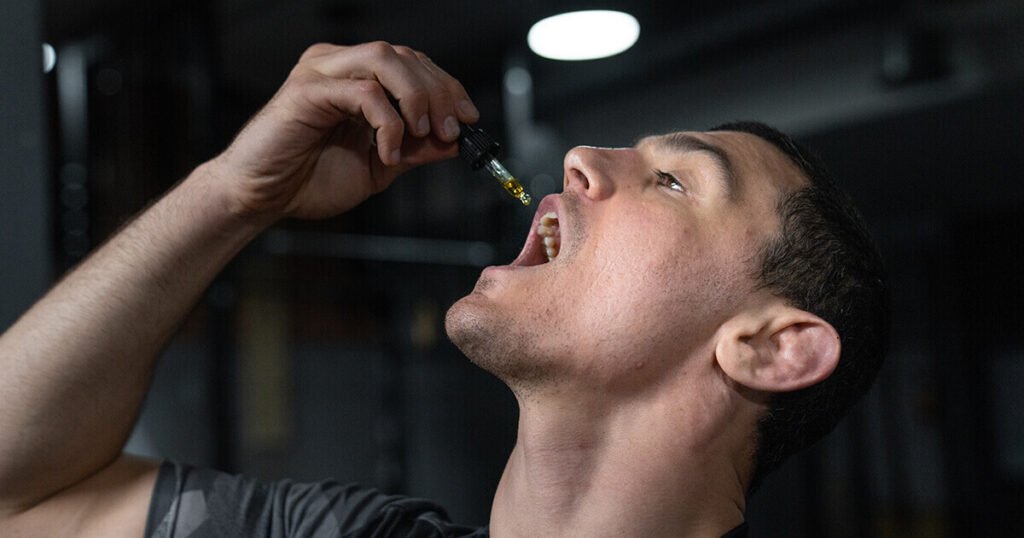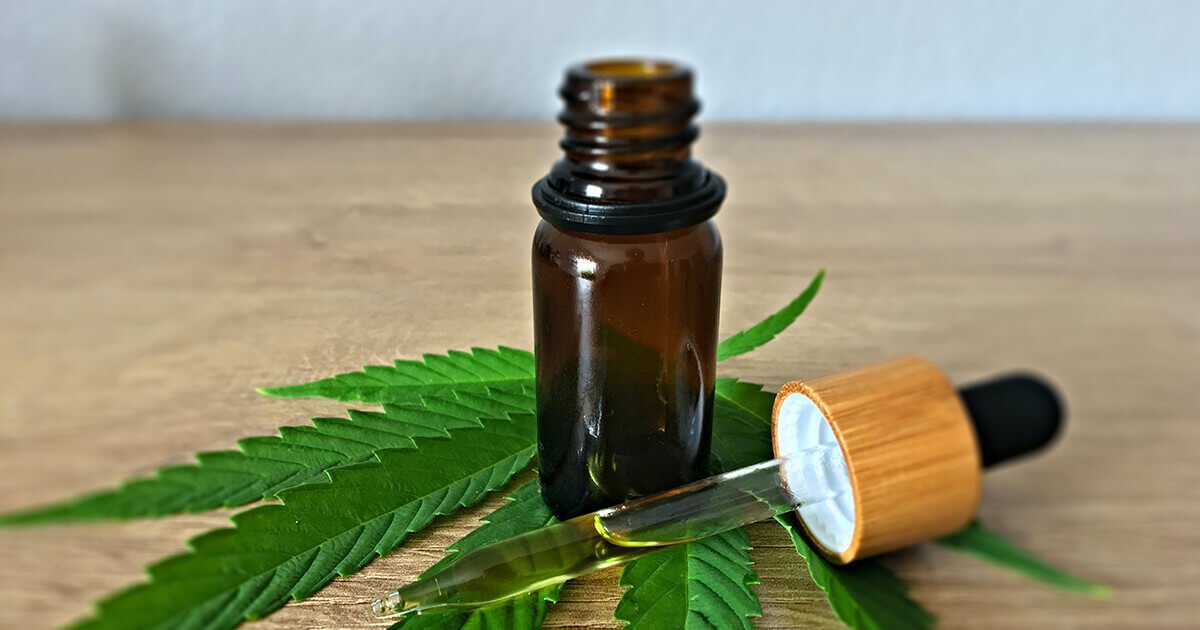If you regularly take CBD oil and are a DIY enthusiast, there’s nothing more satisfying than making your own batch of CBD oil at home. It can be a long and messy process, so you’ll need lots of patience and a few kitchen accessories to make your job easier.
Before you commit to the undertaking, read on to learn about the steps involved in making your own CBD oil.
Why make CBD oil at home?
People choose to make CBD oil at home to either save money or to control the ingredients. (Or for the food science fun of it!)
The CBD industry is now a multi-billion dollar industry. Its benefits are backed by science and new merchants are popping up seemingly every other day. Unfortunately, the industry is growing faster than regulation standards, inviting not-so-ethical merchants and potentially harmful contaminants into CBD products.
That’s why it’s important to do your research and scope out a reputable manufacturer who does 3rd party lab testing on their batches to ensure they are safe and contain the amount of CBD that their labels claim.
(Shameless plug – Hempiness’ CBD products are 3rd party tested and have earned over 14 certificates of approval for safe use.)
Regular CBD use can also get expensive if you have a condition like severe, chronic pain and need higher quantities of CBD oil to help relieve symptoms.
In any case, if you want more control over what goes into your CBD oil, or you simply want to save some money, you can achieve both by making your own CBD oil at home from scratch.
You don’t have to be a scientist or a food chemist, but it does help to know the basic science behind CBD and how different extraction and cooking methods can change the outcome.
But first, a little introduction to CBD and its benefits.
What are the benefits of CBD oil?

CBD oil has been growing in popularity as an alternative treatment for pain, inflammation, and mental afflictions.
It’s hardly an outsider in the medical community anymore. CBD, or cannabidiol, has been widely studied for decades and has a proven ability to treat seizures, soothe arthritis, reduce pain, anxiety, depression, and many other conditions. It also shows results with shrinking tumors and killing cancer cells!
Lots more research is needed in order for us to fully understand all of CBD’s potential benefits, and how much people should take to treat their different ailments.
Fortunately, since CBD is extracted from plants and has virtually zero side effects, it’s totally safe to try out different concentration levels of CBD until you find the percent or quantity that works best for your symptoms.
Here’s a short list of just some of the ailments that CBD helped with:
- Anxiety, stress and high blood pressure
- Depression
- Insomnia
- Migraines
- Muscle & joint inflammation
- Cancer
- Chronic pain
- Nausea
- Acne
- And much more
Now that you know why CBD has grown so popular, let’s take a quick look at how this popular plant compound works in human bodies.
What is CBD, and how does it work?
CBD is the acronym for cannabidiol, which is the dominant phytocannabinoid (i.e. plant cannabinoid) found in the Hemp variety of Cannabis sativa.
THC (tetrahydrocannabinol) is the dominant phytocannabinoid found in the marijauna variety of cannabis, and known for delivering a psychoactive “high.” Hemp, on the other hand, is bred for industrial and therapeutic use and contains virtually no THC. Hemp is completely non-psychoactive as a result.
CBD and THC cannabinoids have been known to the scientific community since the 1940’s but it wasn’t until the 1990’s that scientists began to understand how they interact with the human body.
They discovered that all humans have a vast network of cellular receptors that link the body and the mind and maintain internal homeostasis, or balance. This network is called the Endocannabinoid System, or ECS for short.
The ECS is responsible for regulating various biological processes like body temperature, fluid upkeep, mood and sleep, appetite and metabolism, hormones and reproductive processes, and much, much more.
Our bodies produce natural cannabinoids – called endocannabinoids – that work with our ECS receptors to maintain these everyday functions.
What scientists discovered in the 1990s was that our endocannabinoids are structurally and functionally similar to the botanical cannabinoid found in Hemp: CBD.
Since then, the scientific community has made leaps and bounds with CBD research and has deemed it safe for therapeutic use for various conditions.
Despite the overwhelming research, CBD and Hemp still hold a stigma in the medical community for its botanical relationship to marijuana. So CBD products may not be legal where you live.
It’s important to research the legalities in your area before you purchase CBD or Hemp products, or attempt making CBD oil at home.
Once you confirm it’s legal, read on to learn the different ways of extracting CBD from Hemp.
Different methods of CBD oil extraction

When shopping for CBD products, you’ll find that CBD oils and pastes are most prevalent. (CBD pastes are essentially a highly-concentrated CBD oil.) This is because the CBD compound is best absorbed in the body by a fatty acid, like the fats from carrier oils like coconut or hemp seed oils.
Large-scale producers tend to use 1 of 3 popular extraction methods:
- Carbon Dioxide
- Alcohol (ethanol) solvents
- Oil infusion
CO₂ extraction is largely considered wasteful and expensive in an industrial setting. Plus it’s unheard of in a home kitchen setting.
The alcohol method is a favorite for full spectrum cannabinoid extraction because it retains all the valuable plant terpenes, amino acids, and other hemp nutrients. These work synergistically together to deliver greater benefits than if CBD was divorced from other phytonutrients.
After the alcohol method, the CBD extract can then be carried in a food safe oil like hemp seed or coconut. (Or infused in a substance like beeswax to create a thickly concentrated CBD paste!)
The oil infusion method often gets confused with the alcohol method because both use food oils in the ingredients. However, with the oil infusion method, the hemp flower sits in oil so the fats can lift the cannabidiol compound off the plant material and into the oil.
Oil infusion is perhaps the most straightforward method of CBD extraction for the home chef. You’ll find a ton of different recipes on the web, and some require expensive and sophisticated equipment.
Fortunately, the oil extraction method can be replicated at home using everyday gadgets you can find in your kitchen. Don’t bother purchasing proper equipment for this process unless you intend to routinely make CBD oil at home.
How to make CBD oil, step-by-step
Ingredients:
- 1 ounce / 28 grams of hemp flower (increase or decrease hemp as desired)
- 2 cups / 475ml of MCT or hemp seed oil or high-proof grain alcohol
Equipment needed:
- Baking sheet with parchment paper
- Food processor (Like a Ninja or Magic Bullet, NutriBullet, etc.)
- Slow cooker or Crockpot
- Cheese cloth, or a store-bought fine micron strainer
Step 1: Source your hemp
First you need to source your hemp flower. If you consume a lot of CBD and have a green thumb, you might look into cultivating your own hemp garden. Otherwise you can find a reputable supplier online. (Preferably 3rd party tested and organic!)
If you can’t find a dried hemp flower supplier that you like, you can source the living plant and then cultivate the flower buds and dry them out yourself.
Step 2: Decarboxylate
Next you need to decarboxylate the hemp flower, which is a chemical process that basically converts cannabidiol’s molecular compound from CBDa to plain CBD. This process activates the CBD so it can be absorbed by your body and work its magic in your Endocannabinoid System.
The decarboxylation process requires baking your hemp. Spread the hemp flower on a parchment-lined baking sheet and bake at 230 degrees F / 110 degrees C for 30 – 45 minutes. After, allow to cool at room temperature. This is critical to preserve all the phytonutrients.
Step 3: Grind it up
Toss your baked flower into a food processor (like a Magic Bullet) and grind it up until it’s a fine hemp dust.
Step 4A: Oil infusion method
Add 2 cups of your preferred oil to your slow cooker, and start heating it up before you put your hemp flower in the oven to bake.
By the time the hemp is cooked and cooled, you are ready to add your hemp flower to the slow cooker. Once in, use a spatula to evenly distribute and soak all of the hemp.
Set the slow cooker to cook on low for at least 6 hours. Check in on it once an hour and give it a quick stir.
Step 4B: Alcohol Infusion method
If you wish to pursue the alcohol method, fill a mason jar with 2 cups of high-proof alcohol. Add your decarboxylated hemp flower. Shake the bottle a bit until all plant material is fully soaked in alcohol.
Close the jar and store it in the freezer or anywhere away from direct sunlight for 3 or more weeks. Give the bottle a good shake at least once per day.
Then, proceed to Step 5 to filter your mixture. From here, you can add your alcohol extract to a carrier oil (which helps with absorption) or bottle it in tincture bottles as is.
Step 5: Filter your plant material out
Hold or secure a cheese cloth over a bowl or large measuring cup. Strain the liquid mixture in, squeezing as much oil into the bowl as possible.
If you see some plant material in the bowl, strain your mixture through the cheese cloth again. Repeat this as often as necessary to remove all material from your mixture.
From here, you can pour your CBD oil or alcohol extract into a container or several small tincture bottles. We recommend storing the finished product in the fridge to prolong its shelf life.
Recap
You don’t have to be a scientist or a food chemist to make CBD oil at home, but it does help to know the basic science behind CBD and all the different extraction methods.
You’ll find lots of different recipes online for making your own CBD oil. Some use everyday kitchen gadgets and some will have you buy equipment made specifically for cannabis extraction.
We recommend trying out a few of the simpler recipes (like the one above) before purchasing extra equipment. Just be aware that all methods require several hours or days of effort and lots of patience.
If you’re not thrilled about spending hours in your kitchen, check out Hempiness’ CBD products. You may not get the satisfaction of a homemade product, but it will save you time and protect your kitchen and clothes from a potentially very oily mess!
Speak with a physician before starting any CBD regimen as you could experience interactions with other medications. Like any other wellness routine, CBD is more effective when it becomes a daily or regular habit.










